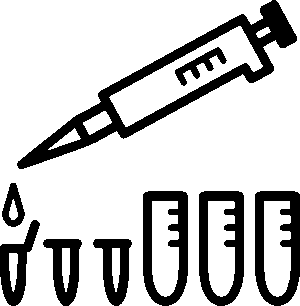Scientific data language, a barrier in laboratory reports, requires demystification for clear communication. Standardization of acronyms and writing conventions enhances transparency and accessibility, fostering collaboration and accelerating knowledge advancement. Effective translation of findings into understandable scientific data language is crucial for peers and laypeople to grasp laboratory results, methodologies, and conclusions. Efficient handling of Laboratory Reports and Scientific Data through standardized formatting, specialized software, and quality control ensures accurate data interpretation, driving progress in science and technology.
In the realm of scientific research, understanding laboratory reports and scientific data language is paramount. This intricate dance of information requires precision and clarity. Our article guides scientists through the labyrinthine world of complex laboratory reports and technical jargon. We demystify scientific data language, offer techniques for efficient handling, and emphasize enhancing accuracy in data interpretation. By mastering these skills, researchers can ensure robust data analysis and effective communication in their field.
- Demystifying Scientific Data Language
- Navigating Complex Laboratory Reports
- Efficient Handling Techniques for Scientists
- Enhancing Accuracy in Data Interpretation
Demystifying Scientific Data Language
Scientific data language can often seem like a complex labyrinth to those outside the field, filled with technical jargon and intricate terminology specific to various disciplines. Demystifying this language is crucial for effective communication in laboratory reports. When experts translate their findings into accessible scientific data language, they ensure that results, methodologies, and conclusions are clearly conveyed to both peers and laypeople.
This involves using well-defined terms, standardizing acronyms, and providing context to technical expressions. By adhering to widely accepted conventions and guidelines for scientific writing, researchers can make their laboratory reports more transparent and understandable. This accessibility promotes collaboration, enables critical analysis, and facilitates the advancement of knowledge across different scientific communities.
Navigating Complex Laboratory Reports
Navigating complex laboratory reports requires a keen eye for detail and a deep understanding of scientific data language. These reports, often brimming with intricate details, are the backbone of research and development in various fields. Scientists and researchers must decipher information presented in a structured yet potentially confusing format to extract meaningful insights.
The key lies in recognizing that laboratory reports follow standardized protocols, ensuring consistency across studies. By familiarizing themselves with these formats, professionals can efficiently interpret data, identify trends, and draw valid conclusions. This skill is pivotal in scientific communication, enabling the exchange of knowledge and fostering advancements in various disciplines, ultimately propelling progress in the world of science and technology.
Efficient Handling Techniques for Scientists
In the realm of scientific research, efficient handling of laboratory reports and scientific data is paramount for effective communication and collaboration. Scientists often deal with intricate information that requires meticulous organization and structured presentation. One of the key techniques involves adopting a standardized approach to document preparation, ensuring consistency in formatting and terminology across all reports. This not only simplifies the review process but also facilitates the sharing and analysis of data among peers.
Additionally, leveraging specialized software designed for laboratory reporting can significantly streamline workflows. These tools enable scientists to efficiently input data, generate charts and graphs, and automate certain sections of the report, reducing manual effort and minimizing errors. By integrating such handling techniques, researchers can optimize their time, enhance accuracy, and contribute to a more robust scientific discourse, ultimately advancing knowledge in their respective fields through effective communication of laboratory findings and scientific data.
Enhancing Accuracy in Data Interpretation
Accurate data interpretation is paramount in laboratory reports, where precise language and meticulous attention to detail are non-negotiable. Scientists must navigate a complex landscape of numbers, measurements, and technical jargon to extract meaningful insights from their experiments. Enhancing accuracy involves rigorous quality control measures, including double-checking calculations, validating instruments, and employing standardized protocols.
Moreover, staying updated with the latest advancements in scientific methodologies ensures that interpretations remain current and aligned with evolving best practices. Effective communication of these findings requires a clear, concise, and accessible language style tailored to the intended audience. This meticulous approach guarantees that laboratory reports convey data accurately, enabling informed decision-making and fostering trust among peers and stakeholders alike in the scientific community.
In conclusion, demystifying scientific data language and efficiently handling complex laboratory reports are paramount skills for scientists. By navigating these challenges, researchers can enhance accuracy in data interpretation, ultimately advancing their work and contributing significantly to their fields. Understanding the nuances of scientific data language and adopting efficient handling techniques empower professionals to make informed decisions based on precise interpretations.
